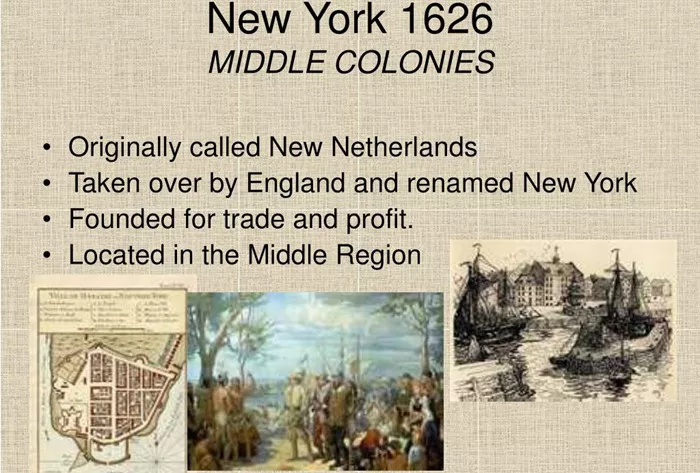New York, the vibrant and iconic metropolis, is a city that needs no introduction. Its towering skyscrapers, bustling streets, and diverse culture make it a global epicenter. But have you ever wondered who founded this amazing city and what led to its creation? The story of New York’s founding is a fascinating journey through time, filled with exploration, trade, and power struggles.
Early Exploration: Laying the Groundwork
Giovanni da Verrazzano’s Discovery
In 1524, an Italian explorer named Giovanni da Verrazzano, sailing under the French flag, became the first European to set eyes on the area that would later become New York. He was on a quest to find a passage to the Pacific Ocean. As he entered the New York Harbor, he was captivated by the natural beauty and the potential of the land. Verrazzano named the region “New Angoulême,” but he didn’t establish a settlement. However, his discovery put this part of the New World on the map for European powers.
Henry Hudson’s Expedition
Fast forward to 1609, and another significant event occurred. Henry Hudson, an English navigator sailing for the Dutch East India Company, was also searching for a route to Asia. Instead, he found himself in what is now the Hudson River. Hudson’s journey up the river was a game – changer. He claimed the land for the Dutch, opening the door for future colonization. The Dutch saw the strategic and economic potential of this area, especially its access to the sea and the rich natural resources.
The Dutch Colony: New Amsterdam
The Establishment of New Netherland
Two years after Hudson’s expedition, in 1611, the Dutch established the colony of New Netherland. Fort Nassau was the first European settlement in this new colony. It was a small trading post near present – day Albany, mainly focused on the fur trade with the Native Americans. The fur trade was highly profitable at the time, and the Dutch wanted to secure their position in this lucrative business.
Peter Minuit and the Purchase of Manhattan
In 1624, the Dutch West India Company decided to expand its presence. They sent an expedition to colonize the area, and in 1625, they set up a trading post on Manhattan Island, which they named New Amsterdam. Peter Minuit, the director of the Dutch West India Company, is often credited as the founder of the city. Legend has it that he purchased Manhattan from the local Manahatta Native American tribe for goods worth about 60 guilders, which is roughly equivalent to $1,000 today. These goods included garments, guns, and duffel cloth. This purchase was a shrewd move. Manhattan’s location at the mouth of the Hudson River made it an ideal spot for trade. Ships from Europe could easily access the port, and it was a central point for the fur trade routes.
Growth and Development of New Amsterdam
Under Dutch rule, New Amsterdam thrived. The patroon system was established to encourage settlement. Wealthy individuals, known as patroons, were given large tracts of land. In return, they had to bring over settlers to farm the land. By 1626, the colony had a population of around 500 people. As the population grew, so did the infrastructure. The Dutch built houses, warehouses, and roads. In 1653, the Dutch West India Company established the first common council, marking a step towards self – governance. New Amsterdam became a diverse city, with people from different parts of Europe and Africa. The city’s strategic location and growing economy made it an attractive destination for those seeking new opportunities.
The English Takeover: The Birth of New York
The British Invasion
In 1664, the British, led by the Duke of York, later King James II, took over the Dutch colony of New Netherland without much resistance. The Dutch, facing various challenges in maintaining their far – flung colony, decided not to put up a strong fight. The British renamed the colony “New York” in honor of the Duke of York. This change in power marked a new era for the city.
British Rule and Expansion
Under British rule, New York continued to grow. The British encouraged immigration and trade. The city became a melting pot, with people from all over Europe and enslaved Africans brought in to work on plantations and in households. The British also made significant improvements to the city’s infrastructure. They built more roads, bridges, and fortifications. New York became an important port for British trade in the Americas, further enhancing its economic importance.
Significance of the Founding
The Impact on Trade
The founding of New York, first as New Amsterdam and then as New York, had a profound impact on trade. Its location at the mouth of the Hudson River made it a natural hub for international trade. Over the centuries, it became a major center for the import and export of goods, from fur in the early days to a wide range of products today. The city’s port facilitated the growth of industries such as shipping, manufacturing, and finance.
Conclusion: A City Born of History
New York’s founding is a complex and multi – faceted story. It was the result of the ambitions of European powers, the pursuit of economic opportunities, and the interactions between different cultures. From Giovanni da Verrazzano’s first sighting to Peter Minuit’s purchase of Manhattan and the British takeover, each event has left its mark on the city. Today, New York stands as a testament to its rich history, a global city that continues to evolve and inspire. As we explore its streets and experience its vibrant energy, we are walking in the footsteps of those who founded this great city centuries ago.

